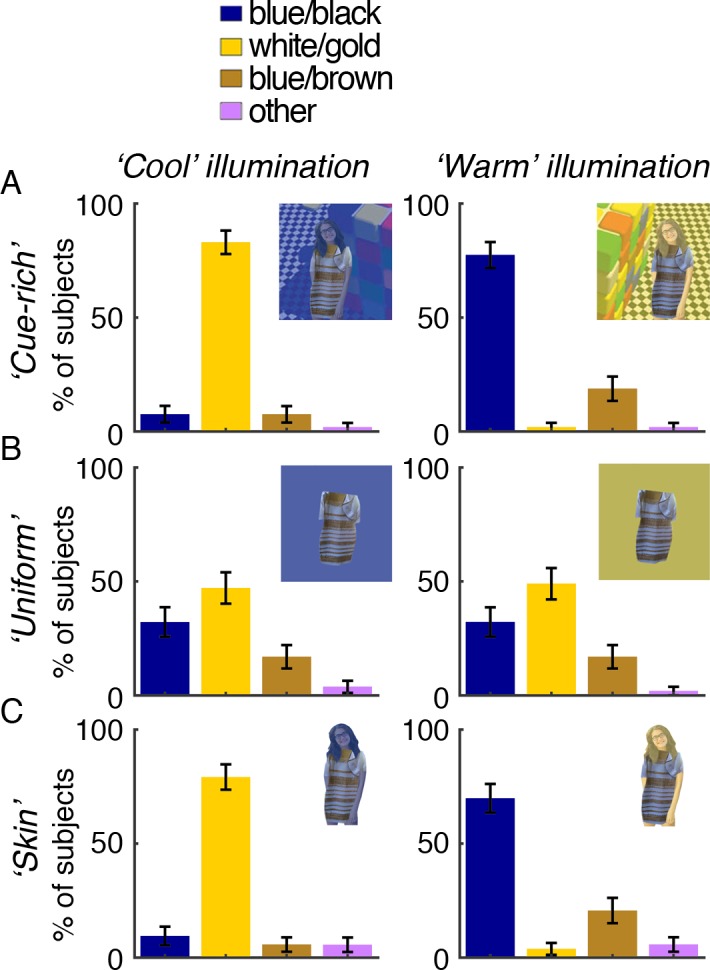Figure 18.

Behavioral evidence that people can achieve color constancy by using human skin as a reference to ascertain the spectral bias of the light source. Histograms showing subjects' reports of the dress's color when it was embedded in simulated contexts designed to convey cool illumination (left column) or warm illumination (right): (A) cue-rich scenes; (B) uniform illuminant-biased chromatic backgrounds; (C) skin with illuminant-biased tints, in isolation. The color of the bar corresponds to the verbal reports (key at top). Insets show stimulus thumbnail (see Supplementary Image Appendix for full-size reproductions). Error bars were calculated using bootstrapping (10,000 bootstrapped samples). N = 53 subjects. See Table 2 for McNemar's chi-square tests comparing goodness of constancy achieved across stimulus conditions. Photograph of the dress used with permission; copyright Cecilia Bleasdale.
